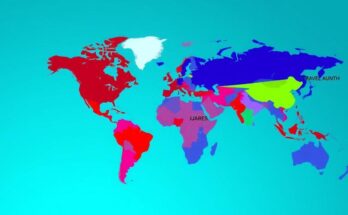The ONLF warns of a potential return to insurgency in Ethiopia’s Somali region due to unmet promises from the 2018 peace agreement. This crisis highlights a troubling return to centralization under Abiy Ahmed’s government, eroding the autonomy that previously quelled the ONLF’s armed resistance. Persistent inequality and repression amid a backdrop of corruption and systemic neglect further complicate the regional dynamics, posing significant threats to stability.
The danger of renewed conflict is increasingly pronounced in Ethiopia’s Somali Regional State as the Ogaden National Liberation Front (ONLF) warns of the potential collapse of the 2018 peace agreement with the federal government. ONLF Chairman Abdirahman Sheikh Mahdi (Maaday) indicated the group is evaluating “all options,” including a return to insurgency due to neglected promises and restricted autonomy, further aggravated by ongoing resource disputes and systemic neglect in the region. This situation falls within a broader pattern of instability affecting Ethiopia’s federal system under Prime Minister Abiy Ahmed, amid escalating tensions from various militia groups across the nation.
The history of the ONLF dates back to 1984, arising as a response to Ethiopia’s long-standing marginalization of the Somali population and exploitation of their natural resources. Following a war in Ogaden in the late 1970s that solidified Ethiopian control over Somali territory, the ONLF launched a guerrilla campaign against Addis Abeba to contest extractive policies that impoverished Somali communities. The unfortunate reality remains that, despite the Somali region being resource-rich, it continues to be one of the most neglected areas in Ethiopia.
Ethiopia’s counterinsurgency responses have often involved brutal tactics, resulting in human rights violations against the Somali population. The establishment of the 2018 Asmara peace deal offered a fragile truce, yet federal negligence and lack of genuine integration for approximately 90% of former fighters has left many in poverty, reigniting ONLF grievances surrounding self-determination. The renewed centralization under the Prosperity Party has eroded the assurances of federalism that sparked the ONLF’s earlier ceasefire.
The ONLF’s recent resurgence can be linked to a combination of historical grievances and contemporary political repression. The current Somali regional administration under Mustafa Omar has faced accusations of corruption, exacerbated by allegations of misappropriation of funds meant for vital water projects—highlighting a system that exploits resources while the population remains impoverished. Mustafa’s administration, allegedly supporting state repression against opposing voices, represents a grim continuation of Ethiopia’s struggles with inclusive governance.
The Ethiopian government’s strategy towards the ONLF, which includes attempts to destabilize the group from within, demonstrates a familiar coercive approach seen against other dissident factions in Tigray and Oromia. Following increasing tensions, remarks by military leaders labeling the ONLF as “enemies of the state” could lead to further isolation of the group and a decreased opportunity for constructive dialogue.
Within this context, public sentiment in the Somali region has begun to mobilize, utilizing social media as a platform for collective action against political injustice. Communities across Ethiopia and the diaspora are joining forces to amplify their calls for equal resource distribution and self-governance. This grassroots resurgence signals not merely a return to militancy but underscores deeper societal discontent rooted in longstanding inequities.
To avert further conflict in the Somali region, federal authorities must act decisively to revive the terms of the 2018 peace deal. Measures to combat corruption, honor regional autonomy, and reintegrate former combatants can help rebuild trust. The potential for humanitarian crises and violent ethnic tensions looms with any further neglect. Central to this effort is the international community’s role—particularly the African Union—in ensuring that Ethiopia remains accountable to its peace commitments.
In the face of threats emerging from the ONLF, alongside a deteriorating political atmosphere and economic hardships, Ethiopia stands at a critical crossroads. The ongoing instability in the Somali region is indicative of a systemic failure to address underlying grievances, which pose risks not only to national stability but also to the broader Horn of Africa. The choices are stark: engage in genuine dialogue and reconstruction or risk the disintegration of fragile peace founded on hope—a decision pivotal to Ethiopia’s future.
Muktar Ismail Issack, a regional analyst and former humanitarian advisor, emphasizes that understanding and addressing the Somali region’s plight is integral to national reconciliation. Without recognizing these grievances, the potential for renewed conflict remains a tangible threat.
In conclusion, the situation in Ethiopia’s Somali Regional State reflects deep-rooted grievances stemming from historical neglect and contemporary governance failures. The ONLF’s increasingly vocal discontent signals a critical warning for both regional stability and national integrity. It is essential for the federal government to engage constructively with the ONLF and restore faith in the peace accord while fostering an inclusive governance framework that addresses the Somali people’s legitimate aspirations for autonomy and equal resource distribution. The path forward requires not only listening to their voices but also implementing actions that affirm Ethiopia’s commitment to reform and unity rather than division and conflict.
Original Source: addisstandard.com




